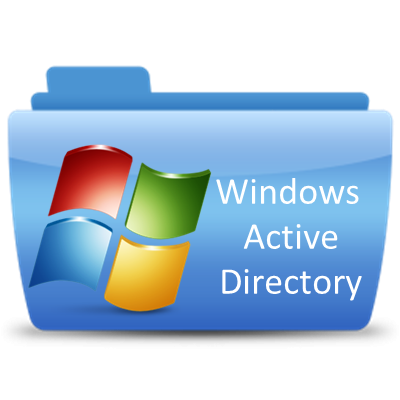Leaderboard
Popular Content
Showing content with the highest reputation on 03/06/2017 in all areas
-
Version 1.6.3.0
18,759 downloads
Extensive library to control and manipulate Microsoft Active Directory. Threads: Development - General Help & Support - Example Scripts - Wiki Previous downloads: 30467 Known Bugs: (last changed: 2020-10-05) None Things to come: (last changed: 2020-07-21) None BTW: If you like this UDF please click the "I like this" button. This tells me where to next put my development effort1 point -
rootx, So you missed the $LVS_NOCOLUMNHEADER style? M231 point
-

Display Device - Need some samples for AMD, Intel and NVIDIA GPUs
KaFu reacted to JLogan3o13 for a topic
It returns Intel string found... Intel(R) HD Graphics 530 for my Intel box, and No Intel string found... AMD Radeon HD 7800 Series, for my other box.1 point -
Using a wrapper around a wrapper of a wrapper .... I was able to get the CLRHost running But this is not the way to go ! I hope that some of the devolopers reach out to give us a hand... rgds ptrex1 point
-
You're telling me that it is simpler and clearer to write something like $Sentence.Myself.Subject() $Sentence.Verb("to be").Present.Person(1) $Sentence.Negation.Absolute() $Sentence.Verb("to convince").Participle.Past() $Sentence.FinalPoint() ConsoleWrite(SentenceBuild($Sentence) & @LF) rather than ConsoleWrite("I am not convinced." & @LF) That may fit your mood or models but I dare to insist that this is counter-productive. A non-trivial application can be a typical simple invoicing system, for instance. There you're likely to find a table of clients, a table of delivery locations, a table of invoicing addresses, a table of orders/invoices, a table of items, a table of items ordered (some delivered and some still pending delivery), a table of paiements associated to orders and invoices, and most probably some more tables to fit the real world (suppliers, stock management, ...) I don't buy the idea that such a common application can use 90% of flat queries.1 point
-
fopetesl, So what exactly is the problem? If you do not define a control, how do you expect it be recognised within your GUIGetMsg loop? M231 point
-

OutlookEX UDF - Help & Support (III)
tourism123 reacted to water for a topic
One last idea would be to manually create a mail that works and store it as a template. Pass the template to itemcreate and replace the attachment with the needed picture (using the same CID).1 point -
The flow of a script is top down, unless there's a function call it will go from line one to line x. This is for general usage scripts, there're always exceptions.1 point
-
1 point
-
Have you tried it yet?In fact, it's slowest method when convert to string and redim new array )1 point
-
@WhiteStar Maybe this can get you going MsgBox(0,"GUID Generator",_GenerateGUID ()) Func _GenerateGUID () $oScriptlet = ObjCreate ("Scriptlet.TypeLib") Return $oScriptlet.Guid EndFunc Rgds ptrex1 point
-

Array delete blank element
beautifulsoup reacted to Bowmore for a topic
An example of how to remove blanks using only the original array. Func _ArryRemoveBlanks(ByRef $arr) $idx = 0 For $i = 0 To UBound($arr) - 1 If $arr[$i] <> "" Then $arr[$idx] = $arr[$i] $idx += 1 EndIf Next ReDim $arr[$idx] EndFunc ;==>_ArryRemoveBlanks ;Some code just to show it working #include <array.au3> Dim $arr1[10] $arr1[0] = "" $arr1[1] = "ABC" $arr1[2] = "" $arr1[3] = "xyz" $arr1[4] = "def" $arr1[5] = "" $arr1[6] = "" $arr1[7] = "ffr" $arr1[8] = "" $arr1[9] = "Z33" _ArrayDisplay($arr1, "Before") _ArryRemoveBlanks($arr1) _ArrayDisplay($arr1, "After")1 point -
If you have big arrays I suggest you to do the following: #include <array.au3> dim $arr1[4] $arr1[0]="" $arr1[1]="ABC" $arr1[2]="" $arr1[3]="xyz" $s_array = _ArrayToString($arr1, "|") $s_array = StringReplace($s_array, "||", "|") $arr2 = StringSplit($s_array, "|", 2) It is much faster than _ArrayDelete() because you don't have to redim the array all the time.1 point
-
Something like this ? #include <Array.au3> dim $arr1[4] $arr1[0]="" $arr1[1]="ABC" $arr1[2]="" $arr1[3]="xyz" $arr2 = _RemoveEmptyArrayElements ( $arr1 ) _ArrayDisplay ( $arr2 ) Func _RemoveEmptyArrayElements ( $_Array ) Local $_Item For $_Element In $_Array If $_Element= '' Then _ArrayDelete ( $_Array, $_Item ) Else $_Item+=1 EndIf Next Return ( $_Array ) EndFunc ;==> _RemoveEmptyArrayElements ( )1 point
-

Array delete blank element
PoojaKrishna reacted to Melba23 for a topic
marshallprank, Easy (when you know how)! #include <Array.au3> Global $Content_Subfolder_include[3] = ["", "ABC", ""] ; Copy the array $arr_2 = $Content_Subfolder_include ; Move backwards through the array deleting the blank lines For $i = UBound($arr_2) - 1 To 0 Step -1 If $arr_2[$i] = "" Then _ArrayDelete($arr_2, $i) EndIf Next ; Et voila! _ArrayDisplay($arr_2)Note you need to move backwards through the array when deleting lines or you end up with element indexing errors. All clear? M23 Edit: And it still works if you add an element to the initial array as you have just done in your edit. But do rermember to increase the dimension size of the initial array if you do that.1 point






